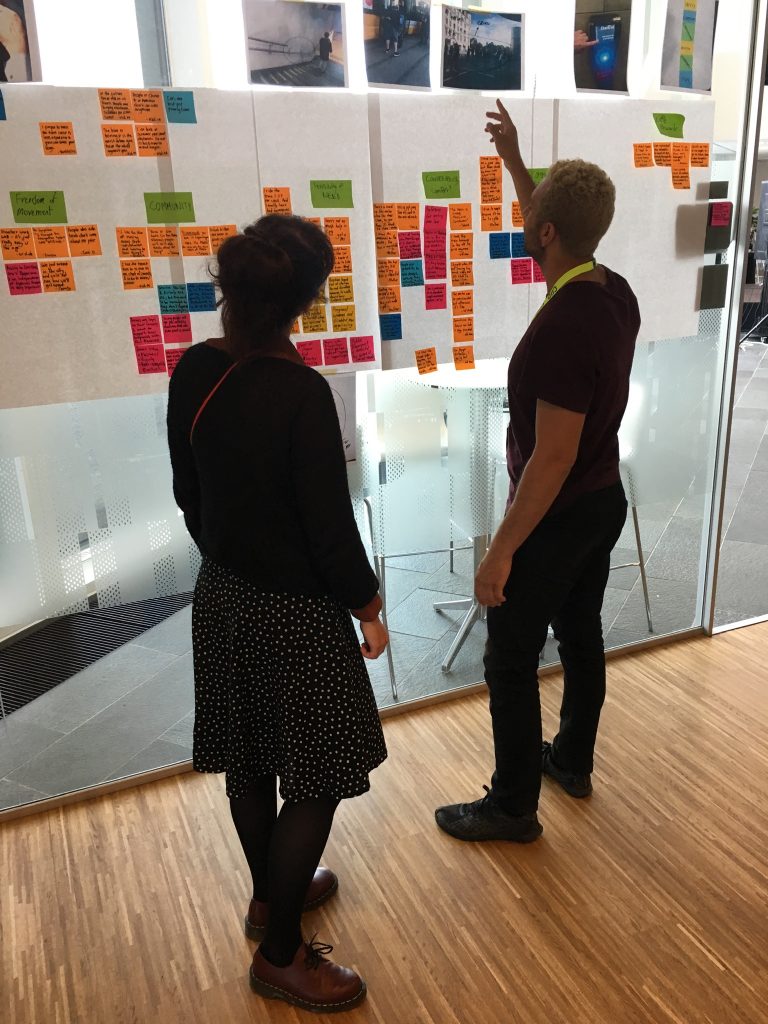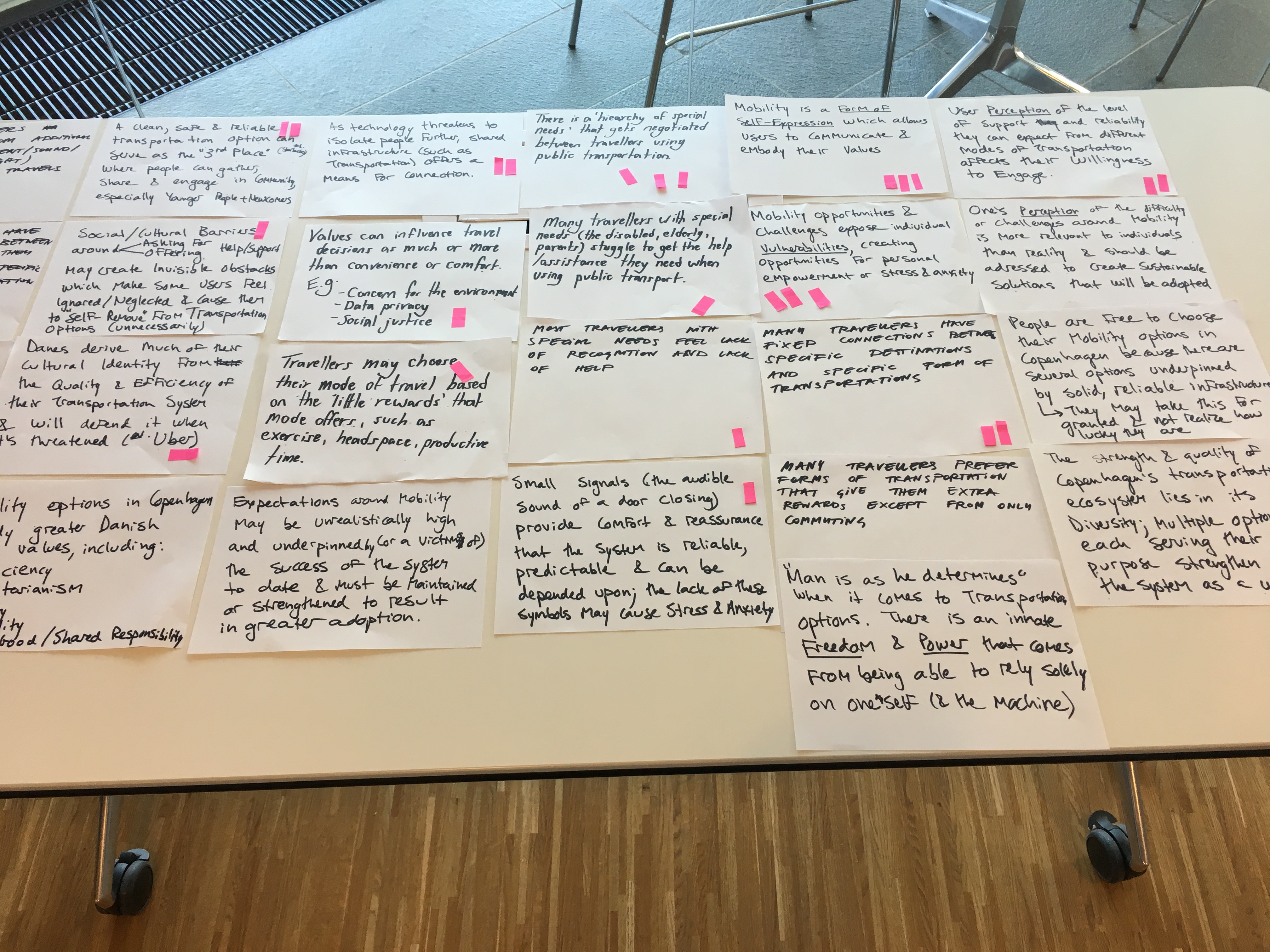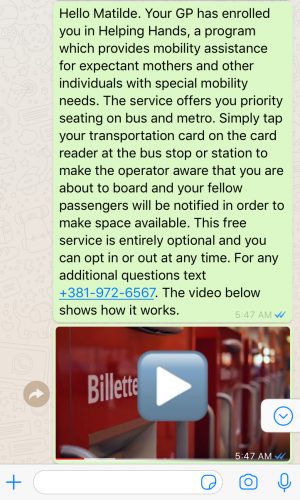Using service design to envision a better shared transportation experience in Copenhagen
Context
As part of the Copenhagen Institute of Interaction Design (CIID) Summer School program I participated in a Service Design intensive in which teams were tasked with increasing the appeal of shared transportation in Copenhagen by 2025. At first glance, the design brief appeared uninspired, as Copenhagen enjoys one of the world’s most efficient metropolitan transportation systems. However, our team would soon learn that individual user groups experienced unexpected challenges in using shared transportation, some of which were directly related to Danish culture and behaviors. Thus began an exercise to better understand the pain points and opportunities for improvement within a world class transportation system.
Role
Our team was fortunate to include members from a diverse range of nationalities and professional backgrounds including Jon, an urban planner from the UK; Aleksandra, a graphic designer from Poland; Jesus, a marketer from Colombia; and myself: a strategist from Canada.
My primary role on the team focused on user research and prototyping. In order to develop a comprehensive understanding of user view points, I led the research process with several transportation providers, including bus, taxi and metro operators, as well as commuters who were not currently using shared transportation. I was also responsible for developing the prototype and related touch points as well as leading the testing process to uncover which features were most useful to potential users.

Process
To kick off the project our class conducted a service safari which involved teams travelling to popular tourist attractions using different modes of transportation. Our team was tasked with using the bycyklen public bike service to visit a popular urban park. We quickly encountered a number of friction points related to initial enrollment and getting comfortable on the electric bicycles, as well as frustration related to docking stations being far from major attractions. With this experience as our jumping off point, we developed a broader picture of the transportation ecosystem, which included a diverse range of users including daily commuters, logistics providers, emergency services, and hospitality operators. By mapping out the broader system, we were able to determine which group we wanted to focus on, ultimately narrowing our scope to local Copenhagen residents.
We began the second day of our assignment by interviewing local commuters as well as transportation service providers to gain a better understanding of the full range of options available in Copenhagen. We also interviewed a broad range of commuters, some of whom never used shared transportation options, often travelling alone by bicycle. In speaking with users a common theme emerged among individuals facing mobility challenges, including older travelers, those with disabilities, pregnant women and families. In various ways, each of the individuals within this group described encountering barriers in using shared transportation, including access issues during peak times and the challenges they encountered in accessing priority seats reserved for them.
Based on these findings we developed an insight that a hierarchy of special needs is routinely negotiated between travelers using public transportation and it is typically based on an implicit, though not necessarily shared, understanding of who qualifies as deserving of special assistance. As a result, we decided to take on the challenge of making the implicit explicit by developing a service solution that would nudge commuters to be more accommodating of their fellow passengers by integrating audio, visual and physical infrastructure to prompt them to address cultural behaviors in public spaces.
Our service prototype was modeled on the experience of a pregnant woman. “Helping Hand” is a service in which a designated user receives special assistance and priority access to shared transportation. In the case of our user, Matilde, her doctor enrolls her in the program and she is notified via text message, with an option to opt in or out. Once she arrives at a station, Matilde swipes her existing public transportation card against a sensor, sending a message to the approaching transport that she requires assistance. As the bus or metro approaches the station, video and audio messages in English and Danish advise passengers that a user with special needs is about to board, and requests they make space available.
Our objective with this service is to make the implicit request that regular users support those with mobility challenges more explicit, ultimately leading to a more positive travel experience for those with mobility issues and increasing the usage of shared transportation by removing barriers.
Following the service safari, our team mapped the user journey according to human, physical, and information interfaces, identifying all touch points and the overall emotional experience throughout the journey. Key insights of this exercise included the negative emotional effects of a confusing enrollment process and the lack of customer support.
In Action
Following the service safari, our team mapped the user journey according to human, physical, and information interfaces, identifying all touch points and the overall emotional experience throughout the journey. Key insights of this exercise included the negative emotional effects of a confusing enrollment process and the lack of customer support.

Based on user research with local commuters and transportation providers, our team developed a variety of insights and then voted to decide which ones offered the greatest potential to address our goal of of increasing the use of shared transportation in Copenhagen by 2025.

A simple text message was identified by users as the most effective means of communicating their enrollment in the Helping Hand program. Users also appreciated the ability to opt-out of the program and advised that they preferred that enrollment be initiated by someone with whom they had an existing relationship, such as their doctor, rather than a transportation provider.
By conducting several pilots we were able to observe user behavior and determine the effects of our prototype. In the demonstration above, each of the participants expressed how design features such as physical signage and the audio announcement affected their reactions.
Outcomes
In order to test our service we developed a prototype of a bus using a narrow hallway and placed participants in the priority seating section to determine how they would respond to different features we developed. Across several iterations we tested different means of alerting passengers to make room for passengers with special mobility needs, including audio recordings, video messages, special signage above seats and lighting.
As we tested the different features and observed the behaviors of test users, we observed that a combination of the audio message and signage was most effective in spurring regular users to make space available. Interestingly, some test users were unwilling to vacate their spots, citing a desire to be sure that a user really truly required the seat, indicating there was still more that could be done to ensure access for users with special needs.
In iterating our concept further, we considered how the data from tapping a transportation card against a censor could be tracked and used to determine infrastructure deployment and investment. For instance: if there were a high number of families with strollers at certain times, buses with fewer seats and more space to accommodate strollers could be scheduled to accommodate those users. We believe there is value in this type of data and that it can be captured easily by using the existing sensor technology available throughout Copenhagen’s transportation network.
In our presentation of the Helping Hand service we outlined the key features intended to make implicit behaviors explicit in order to better support commuters with special mobility needs. Future iterations of the service could include greater integration with private transportation providers to offer a more seamless user journey from their front door to their final destination and back again.




